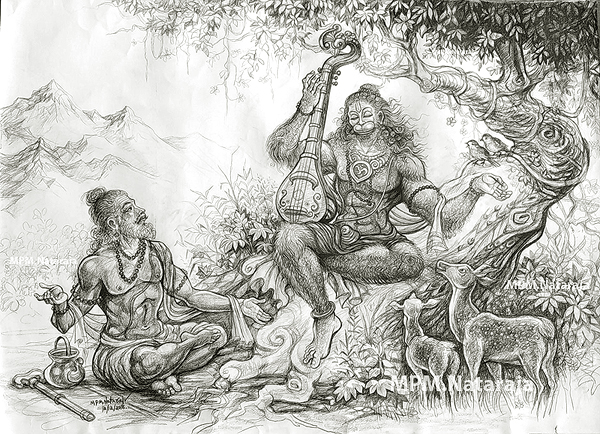The poet sage Valmiki has just completed his epic, Ramayana.
Narad, divine messenger and communicator visits him: ‘Do you know that Hanuman has also written a Ramayan?’
Valmiki is anxious- a competitor? He makes haste to the forest –Hanuman’s Ramayana is scripted on thousands of large banana leaves.
When Valmiki reads Hanuman’s text, he is touched, moved and inspired to tears. Every sentence is soaked with ‘rasa’ and ‘bhaav’ of love. He is also envious— will the world read his epic ? This seems far superior to his own.
Then Hanuman reads Valmiki’s masterpiece. It is full of scholarship and an objective description of Rama, his actions and his epoch, yet written in exquisite poetry .
Lord Rama appears and, “Both the writings are excellent and incomparable. Hanuman’s is a song drenched in emotions. Valmiki’s is a work of a poet, academic and historian. Both Bhakti yog and Gyan yog are equally important paths of enlightenment.”
Today’s work place also needs us to pay attention to both— cold facts, data, logic and rationale AND the warmth of emotions.
Sensing, recognizing, acknowledging and responding to emotions humanizes the workplace. It is the juice which connects people. Relying on only statistics, knowledge and reasoning in interactions makes us transactional and exhausted.
Emotions play a big role in our lives. There are more than 600 words in English to describe them; and 43 facial muscles to express them physically. Although human beings speak more than 6,000 languages, about 90 percent of people across different cultures have no trouble figuring out if someone is registering happiness, surprise, or disgust just by looking at the person’s face.
We are supersensitive to the slightest shift in people’s facial expressions, especially if they are registering fear or anger.
And yet, business folk are ambivalent about emotion in the workplace. At best, it is awkward and better be over quickly. At worse, it is a pollutant clouding the cold, data-driven reasoning that business supposedly runs on.
The focus remains on logic, cold data-driven reasoning: Giving instructions, Asking why/ problem solving, Measuring gaps and outcomes.
Salovey and Meyer defined Emotional Intelligence as: ‘The ability to monitor one’s own and others’ feelings and emotions, to discriminate among them and to use this information to guide one’s thinking and actions.’
Do you stop to ask: How am I feeling? What emotions can I read from the other’s micro expressions? What is the predominant emotion in the room? How can I use this information to guide my thinking and actions?
(Today is full-moon and the birth anniversary of Maharishi Valmiki.)
Art by MPM Nataraja
To learn about our upcoming 5-week workshop on Developing Emotional Intelligence for Executive Presence, click on the link.


Beautiful article about engaging both the rational and emotional aspects of the personality…
Something that we can all be reminded of as we seek to communicate.
The artwork is amazing as well.
Thank you Vivek- I’m glad this served as a reminder. Writing is one way I remind myself.